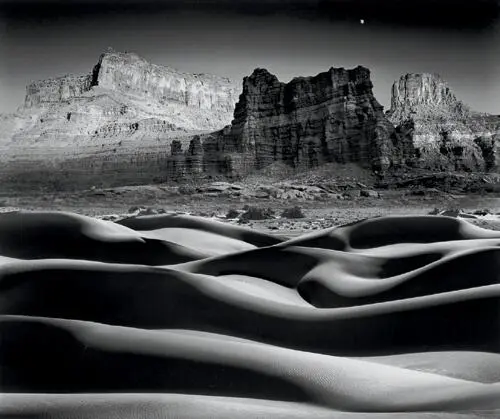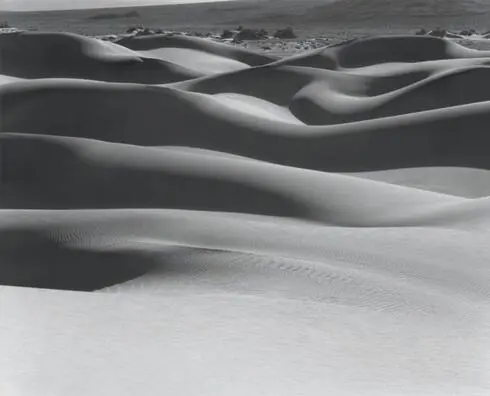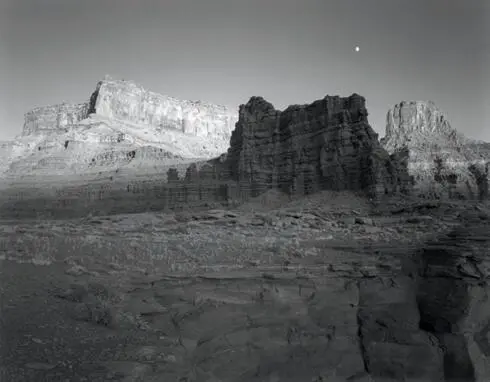Bruce Barnbaum - The Art of Photography - An Approach to Personal Expression
Здесь есть возможность читать онлайн «Bruce Barnbaum - The Art of Photography - An Approach to Personal Expression» весь текст электронной книги совершенно бесплатно (целиком полную версию без сокращений). В некоторых случаях можно слушать аудио, скачать через торрент в формате fb2 и присутствует краткое содержание. Жанр: Старинная литература, на английском языке. Описание произведения, (предисловие) а так же отзывы посетителей доступны на портале библиотеки ЛибКат.
- Название:The Art of Photography: An Approach to Personal Expression
- Автор:
- Жанр:
- Год:неизвестен
- ISBN:нет данных
- Рейтинг книги:5 / 5. Голосов: 1
-
Избранное:Добавить в избранное
- Отзывы:
-
Ваша оценка:
- 100
- 1
- 2
- 3
- 4
- 5
The Art of Photography: An Approach to Personal Expression: краткое содержание, описание и аннотация
Предлагаем к чтению аннотацию, описание, краткое содержание или предисловие (зависит от того, что написал сам автор книги «The Art of Photography: An Approach to Personal Expression»). Если вы не нашли необходимую информацию о книге — напишите в комментариях, мы постараемся отыскать её.
The Art of Photography: An Approach to Personal Expression — читать онлайн бесплатно полную книгу (весь текст) целиком
Ниже представлен текст книги, разбитый по страницам. Система сохранения места последней прочитанной страницы, позволяет с удобством читать онлайн бесплатно книгу «The Art of Photography: An Approach to Personal Expression», без необходимости каждый раз заново искать на чём Вы остановились. Поставьте закладку, и сможете в любой момент перейти на страницу, на которой закончили чтение.
Интервал:
Закладка:
Note
The darkroom or computer is as much a creative tool as the camera. All tools of any trade should be used thoughtfully and to maximum advantage
The darkroom or computer is as much a creative tool as the camera. All tools of any trade should be used thoughtfully and to maximum advantage. How can anyone feel that manipulating a print in the darkroom by dodging, burning, flashing, masking, or reducing is any less legitimate than altering contrast via paper grades, filters, or lenses; or editing an image in Photoshop by altering contrast settings, reshaping curves, or adjusting color, saturation, or hues? They are all part of creative photography.
Nobody questions a painter’s right to use any manipulation they desire. Objects can be placed on the canvas at will; colors and shapes can be chosen to suit the artist’s vision. Painters can set up a canvas in front of a landscape and move things around, add things, remove things, and alter the sizes, shapes, and colors in any way they choose. It’s all legitimate. In fact, anything can be done by painters in the name of art.

This was the first of my “ideal landscapes”, i.e., fictional landscapes derived from more than one negative. Figure 14-3 and Figure 14-4 show the full straight prints of the component parts. Neither of them struck me as complete by themselves, with large, boring areas that required cropping. Putting the components together made good artistic sense but initially drew extreme displeasure from viewers outraged by the “falseness” of it. Some still refuse to accept it; most have changed their minds and accept it as artistically valid. Review the two component images and the final combination, and decide whether you see it as valid art or fraudulent deception .
Figure 14-2. Moonrise Over Cliffs and Dunes

Exposed in 1976, this image possesses interesting rhythmic dune forms in the upper center, but the rest of it offers little. I never printed it as a single image .
Figure 14-3. Dunes, Death Valley

Exposed in 1991, the upper half of this scene excited me immensely, but the lower half was uninteresting. I initially considered cropping off the bottom and turning the image into a narrow panorama. Then the idea of combining it with the dune image jumped into my mind. It was a triumph, opening the door to numerous other combination prints .
Figure 14-4. Moon Over Butte and Cliffs, Utah
Photography can be more restrictive. Objects cannot always be moved, inserted, or removed with traditional techniques, though digital approaches easily allow these manipulations. It’s necessary to find meaningful relationships between objects in the field, which often means careful placement of the camera to produce interesting relationships. Tonalities can’t be altered easily in the field, but enormous changes are possible on the computer using a variety of applications. However, by using filtration in the field, followed by appropriate negative development and careful dodging, burning, flashing, or bleaching during printing, the relative brightness of two objects can even be reversed! Painters have the right to do this; photographers enjoy the same artistic rights.
With these thoughts in mind, in 1992 I began printing a series of landscape images that are created from more than one negative. Sometimes the foreground of one scene is meshed with the background of another (Figure 14-2, Figure 14-3, and Figure 14-4). Sometimes a corner of one scene is replaced by a portion of another. Sometimes a sky from another negative is printed into the background. (This technique was quite common in the late 1800s and early 1900s when orthochromatic films rendered almost all skies white, so a second “sky negative” was employed to enrich the blank background of the prime negative.) Sometimes one negative is printed fully over another. Any other conceivable variation can be employed. There are no restrictions to the approaches I use.
These multiple negative landscapes—or abstracts drawn from the landscape—are all designed to have a realistic appearance. That’s the only restriction I place upon them. They are landscape images created in the darkroom. They are photographic fiction just as a novel is literary fiction. Depending on the viewer’s way of thinking, they are either artistically creative or downright phony. They are undoubtedly the most controversial images I have ever produced.
To me they represent ideal landscapes: the types of places I would love to visit if they existed. I bring them into existence in the darkroom. Painters unquestionably have the right to create their own fantasy landscapes purely from imagination. I ask for the same right to be granted to photographers. My multiple-negative imagery allows me to expand landscape photography from places I have seen and loved to places I would love to see.
These images initially created a firestorm of controversy. Interestingly, it appears that the realistic nature of the images is the prime reason for the hesitation or outright opposition I sometimes encounter. Among those who have expressed displeasure with the series, none have registered complaints with the multiple negative surrealism of Jerry Uelsmann. They recognize his works as flights of fancy and accept them on those terms. But the inherent realism of my ideal landscapes leads some viewers to feel tricked when they find out that the scene doesn’t exist in reality. Apparently when they ask, “Where was that photograph taken?” and I answer, “The upper part is Utah and the lower part is California” (or something like that), they are dismayed. Others are angered. Still others find it perfectly acceptable. In short, the imagery is controversial.
Those who are excited in a positive sense see the combination print as a creative effort in the finest artistic tradition. Some people never ask where the photograph was taken; they simply respond to the visual image in front of them.
Would anybody ask a painter, “Where did you place your canvas when that painting was made?” Of course not. A landscape painting can be created entirely in the studio. It’s of no consequence. But apparently the question, “Where was it taken?” is important to some viewers of landscape photographs.
I view the photographs in this series as another way of creating a pleasing image, a meaningful image. If, for instance, I did not have the opportunity, the strength, or the courage to get to a particularly rugged landscape with my camera equipment, perhaps I could create an equally rugged scene from two or more negatives in the darkroom. This way I can create a photographic fiction that is as visually exciting to a viewer as a good novel can be to a reader, or a great piece of music can be to a listener. To me, painting, literature, music, and photography are all art forms, and anything that can produce an emotionally fulfilling experience is acceptable. I believe that the question should not be “Where was it made?” or “How was it made?” but “How do I respond to it?”

This two-negative image initially seems real but in fact is utterly strange. It’s based on Yogi Berra’s famous advice, “When you come to a fork in the road, take it” .
Читать дальшеИнтервал:
Закладка:
Похожие книги на «The Art of Photography: An Approach to Personal Expression»
Представляем Вашему вниманию похожие книги на «The Art of Photography: An Approach to Personal Expression» списком для выбора. Мы отобрали схожую по названию и смыслу литературу в надежде предоставить читателям больше вариантов отыскать новые, интересные, ещё непрочитанные произведения.
Обсуждение, отзывы о книге «The Art of Photography: An Approach to Personal Expression» и просто собственные мнения читателей. Оставьте ваши комментарии, напишите, что Вы думаете о произведении, его смысле или главных героях. Укажите что конкретно понравилось, а что нет, и почему Вы так считаете.












